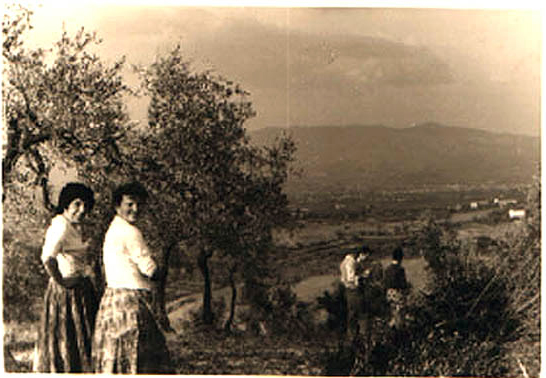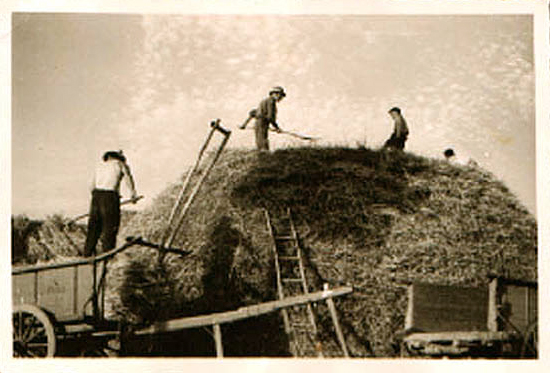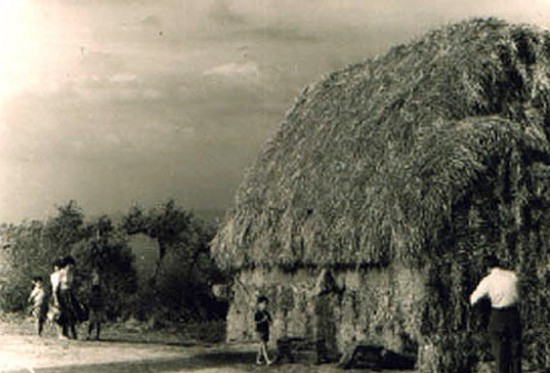THE ORIGINS

In ancient times, the hilltop was the site of the castle or castelletto of San Quintino with its historical records dating back to before the year 1000. Although it played a prominent role in the wars between city states over the next centuries, already in the 16th century, a single tower, containing the gate to the castle, was the single relic. The church, too, is documented before the year 1000, but according to tradition it was destroyed by fire, no one knows in what century.
The only certain fact is that the present canonica and the church had noble origins, as property of the Roffia family. The castle and later the Roffia Villa were the focal points of a small farming community that even at its most flourishing amounted to hardly more than 150 people. San Quintino’s wines have been renowned since ancient times (since at least 1508, according to Vatican records), as has the classic Tuscan extra virgin olive oil.
VILLA CECCHI - ROFFIA
On the hill of San Quintino there once stood of the many medieval fortified castles of the area.
The location was perfect, on the second highest of the surrounding hills, after San Miniato. On the map of the people of “S.to Quintino” drawn in the late 16th century by the Capitani di Parte, the original structure is still visible: still standing on the hill were the “gate of the Castle of San Quintino,” with the large residence of the Roffia, an important family with origins in San Miniato, as well as the nearby houses of the Salviati. The church of San Quintino had already been transferred to the ridge to the west, connected by a “140-braccia”-long straight path to the fortress gate. The same complex is found on a 1583 sketch attached to a petition addressed to the Grand Duke by Niccolò Roffia (1549-1607) asking permission to knock down the west tower of the castle, which was threatening to collapse.
This huge square structure can be seen today included in the western part of the Villa Cecchi, of more recent construction. The owners Roberto and Mirella Cecchi discovered it during reconstruction work; the workers were struck by the considerable thickness of the walls (about 3 feet) and by its double brick facing and masonry fill construction, just as in the late 16th-century description. The Roffia, who maintained jurisdiction over the castle and the church of San Quintino until the 18th century, were able to incorporate the west tower of the castle into the later enlarged house.


HOW THE FATTORIA WAS BORN
In 1946 Roberto and Mirella Cecchi bought a group of poderi or field plots, in San Quintino.
At that time those hills were not served with electricity, well built roads or water; water was drawn from the pools using mezzine or small buckets.
Several sharecroppers and their families lived on the poderi, with each poderi being a self-sufficient system that usually comprised a vineyard, olive trees, fields to grow grain and forage for the animals; sometimes also mulberry trees for silk production.
According to the agricultural system of the mezzadria, enforced from the Middle Ages in many zones of the Tuscany and Italy, the sharecropper shared the products of the land with the owner, based on a legal contract.
In San Quintino all the sharecroppers carried the grapes for wine production to the wine cellar located on the first floor of the Villa. Also, they laid some white grapes on mats in the villa’s attic to let them dry until the following February or March for the Vinsanto production.
In the 1960’s, due to the industrialization process, the sharecroppers begun to abandon the countryside because jobs in factories promised a better life for them and their families.
In 1967 the Fattoria (farm) di San Quintino was born: from that moment the land has been administrated by the owners- Cecchi family, now at the third generation. Full time and seasonal workers, some of which now live in the houses once occupied by the sharecroppers, help the owners with the cultivation and harvest. The wine cellar was transferred from its original location in the 1970 to a building of new construction and the first vintage year from the Fattoria di San Quintino was bottled in 1971.
Still today in harvest time the old sharecroppers with their families come to San Quintino to greet with affection the Cecchi family, to keep the memory alive and to enjoy the unchanged panorama.


